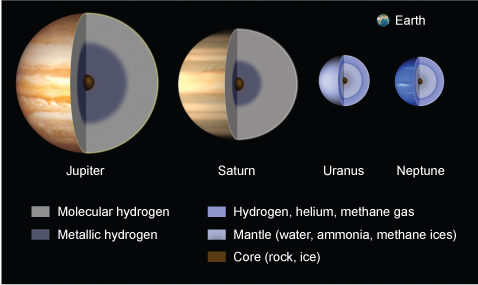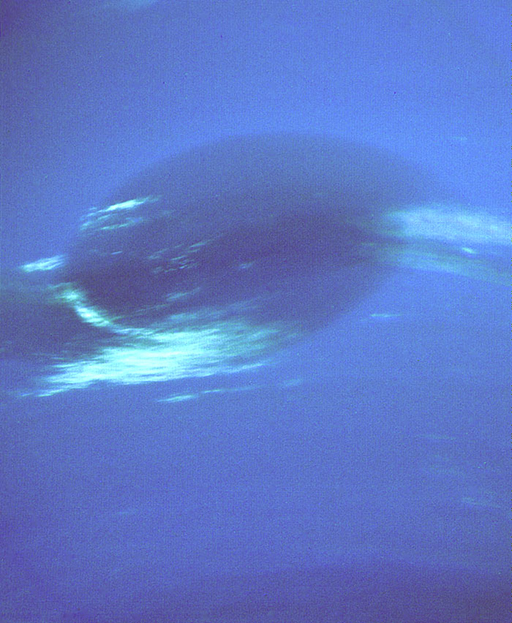3 Gas giants and ice giants
The outer regions of the four giant planets in the Solar System are pretty similar – their atmospheres are all mostly made of hydrogen and helium gas. However, if you look at their interiors, you can start to see some differences between them.
Jupiter and Saturn are made predominantly of hydrogen, with some helium. However, the cooler planets, Uranus and Neptune, are thought to have mantles made of water, ammonia and methane underneath their atmospheres. You may know methane better as the natural gas that powers your gas boiler if you have one in your house.
It’s hard to tell for certain because Uranus and Neptune are shrouded in a shell of hydrogen and helium, but astronomers think the water, ammonia and methane in their mantles are in the form of fluids under very high pressure – so not really ices. Uranus and Neptune are actually called ice giants because scientists think the water, ammonia and methane were all ices when the planets were formed. Uranus and Neptune formed in extremely cold conditions – methane freezes at −182 °C!
Uranus and Neptune are the only planets in the Solar System that have not had a dedicated mission sent to observe them, so these are probably the most mysterious of the eight planets. They were briefly studied by the Voyager 2 spacecraft in 1986 (Uranus) and 1989 (Neptune). Beautiful images like the one shown in Figure 5 of Neptune’s Great Dark Spot make them a very attractive target for future space missions, but because they are so far away it would take years to get there.


